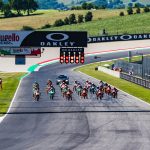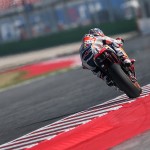So long then motorcycle racing. It was nice while it lasted. Qatar’s floodlights and vast grandstands played host to an eerie MotoGP-lite first round of the year, one which had everyone rushing to the exit on Sunday evening knowing another long, interminable and indefinite wait for the next was incoming.
And while the list of postponements and vexing calendar plots have dominated the subsequent newsreel this week, there were a number of pleasant surprises and positives to take into the second outing, wherever – and whenever – that may be.
The smaller classes were handed centre stage and given a chance to showcase their abilities. Just as well for series organiser Dorna Moto3 is going through a golden age with racing and drama on a level of the premier class. 16 riders, the chequered flag and 2.5 seconds covering them all is a sight that has become commonplace over the past five years.

Moto2 is as open as ever, as evidenced by Tetsuta Nagashima’s emotional triumph. Spurred on by the memory of late friend Shoya Tomizawa, who won in similarly surprising circumstances here a decade before, the Japanese father of three tore through the pack from 14th on the grid for one of grand prix’s less expected feats in recent times.
But perhaps even more striking than that was the resurgence of one nation that – for close to a decade – had been showing few or no signs of flowering once more. Yes, I’m talking about Joe Roberts from the U S of A, who was somehow transformed from back-of-the-grid no-hoper to lap record holder and podium contender in the space of three winter months.
Seeing the stars and stripes at the front was a welcome return for those, like me, who grew up in a time when the star spangled banner was always the first anthem lined up by the podium emcee. America has contributed so much in terms of colour, talent (seven different world champions in the premier class from 1978 to 2006) and tales of heroism in seasons gone by.
But that’s the point. Successful lineage has counted for little in recent times. The American motorcycle market has struggled to recover after the economic downturn of 2008, and the spectacular mismanagement of its national series by the Daytona Motorsports Group, a commercial organisation that took over the road racing championship from the AMA in 2008, led to almost an entire generation of talent being stranded at home.
The popularity of Supercross and the modern day expense of making it to GPs (a ride in the paddock is usually preceded by at least a full year in the Spanish national championship, where seats can cost up to €250,000 a season) were all contributors to Americans being absent in the premier class since 2016. Prior to then there was always at least one athlete going all the way back to 1975.
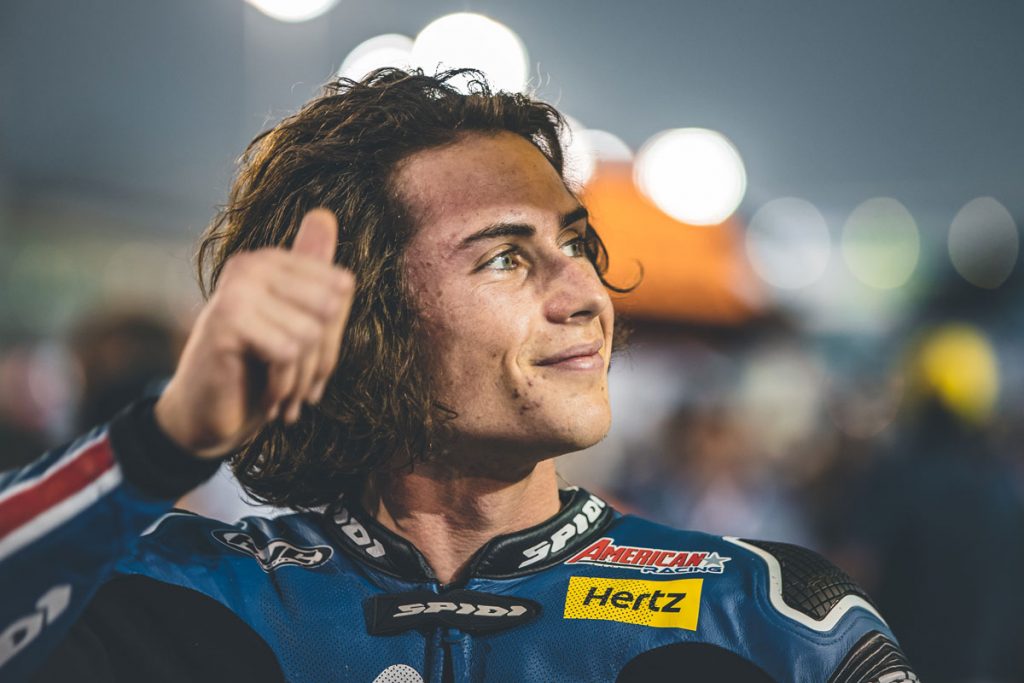
For two years, Roberts’ own involvement could cynically be viewed as little more than a token gesture: the sole American on the grid to shoehorn into commercial duties ahead of the Texas-based (now defunct?) Americas GP. But let’s not forget this was a rider who defeated the likes of Brad Binder and Lorenzo Baldassarri when competing in the Red Bull Rookies as a teenager. It’s fair to say not just any old racer can show up on their grand prix debut and muster a tenth from nowhere, as Roberts did at Brno in 2017.
“First thing I can say is riders in the world championship are freaking assholes,” he told me that morning after a midfield battle had ended with one rider pointing Roberts to the dirt on the outside of the track via his elbow. As he was laughing it off, there was a realisation of the extremes GP competitors would go to in a fight for single points.
Two seasons on less than competitive equipment in the intermediate class have been the ruin of riders before. Roberts took the NTS chassis to two point-scoring finishes in its first season at world level. The KTM he used in 2019 was inadequate. The speed of grand prix winners Jorge Martin and Marco Bezzecchi – riders that recently made a similar KTM-to-Kalex jump – has underlined how underwhelming the chassis was.
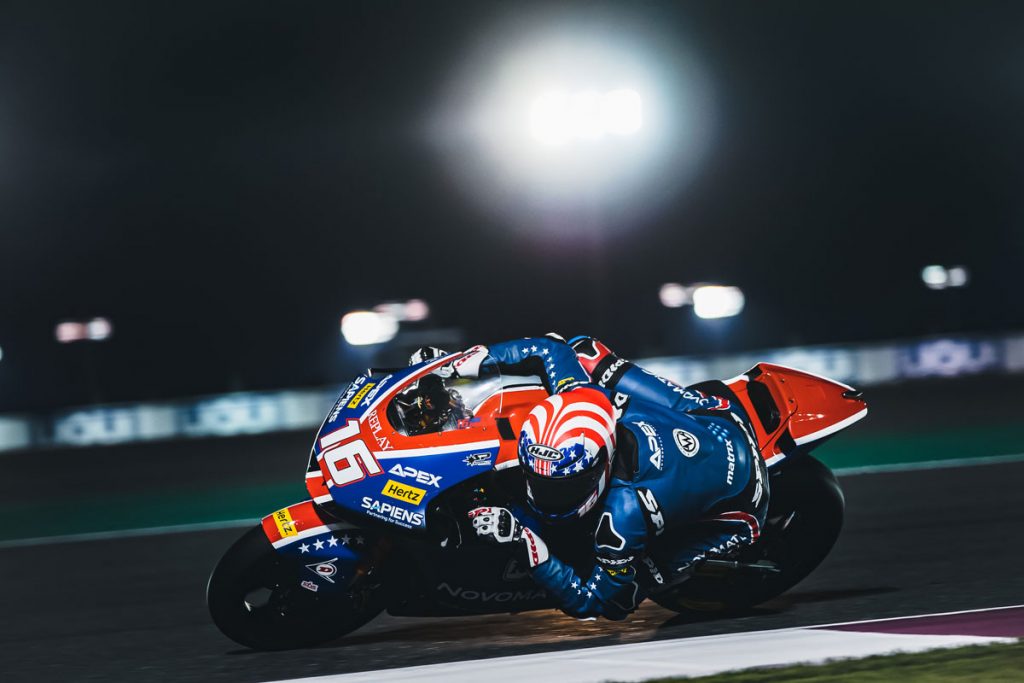
Some smart thinking propelled the American Racing squad toward the limelight. This team has history, of course. As recently as 2017, it took Thomas Luthi to second in the series. But a host of sponsorship letdowns and serious financial issues saw it mould from CarXpert Interwetten to the dubiously named Swiss Innovative Investors and then American Racing in just three years. Prior to its current incarnation, ex-riders Luthi and Sam Lowes went many months without pay.
But team owner Eitan Butbul, who took over the reigns at the start of 2019 ahead of the current rebranding appears to have steered the ship back on the straight and narrow. Year one allowed him to assess the structure and what was lacking. Even before year two, he was working behind the scenes, and Qatar demonstrated the fruits of recent joined up thinking.
“Last season was really difficult,” Butbul said. “It was my first season as team manager/owner and it was like a learning curve. During the season I understood that we needed somebody that could help the riders. I was looking for someone to work for us that was especially American.” Step forward ex-MotoGP rider John Hopkins, still coming to terms with racing retirement and keen to be involved in the sport once more.

Based in LA over the winter, the pair got to working together, discussing everything from training to diet and racing mentality. A close relationship blossomed and the pair soon found they had more in common than first thought. “I unfortunately hadn’t had the pleasure of really getting to know Joe until this last winter,” Hopkins said. “So I went into the deal really not knowing what to expect whatsoever, but there wasn’t a week that went by throughout the entire winter where we weren’t at one form of a track, cross-training, road racing, supermoto, minibike riding.”
“We sat in the car talking about things we struggled with on the track, and I’m like, they’re literally the same things,” Roberts said. Hopkins added, “I knew simple things that worked throughout my career that made a massive difference, and I have been able to transmit that over. So far everything has been an improvement, making it happen.”
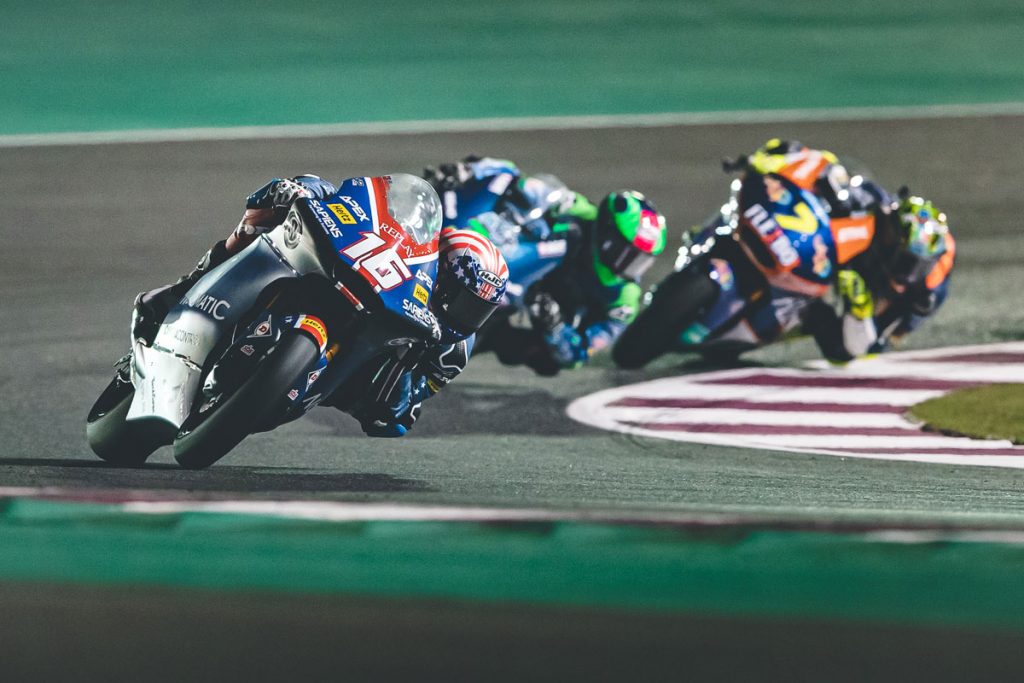
Of course the new Kalex chassis helped. There was work in a wind tunnel over the winter, as, standing at 180cm, top speed had been one of Roberts’ failings in years gone by. “He’s a little bit bigger than the rest of the riders,” explained Butbul. “Some stuff we improved [like] the position of the hands, legs and everything to give him the advantage to get a bit more speed.” And the appointment of Lucio Nicastro – formerly with Chaz Davies and Sam Lowes in World Supersport – as crew chief has immediately improved in-garage communication.
“In a championship class when it’s so tight … self-belief is his biggest thing,” Hopkins said. “He has just as much talent as any other guy in the championship. Especially working with him this winter, I would say his biggest improvement is confidence, he’s got a crew chief that he is working well with, a bike that he feels comfortable with underneath him, and it’s a combination of everything.”
Roberts fine fourth place was the best for an American in grand prix since Nicky Hayden’s fourth in October, 2012. Almost ten years. Positive times may well be ahead for a nation that used to be a reference in the sport. Now all we need is another round to confirm what we saw in Qatar. For Joe’s – and our collective sanity’s – sake, let’s hope there are no further postponements before the start of May.
By Neil Morrison @neilmorrison87
Photos by Polarity Photo @polarityphoto


